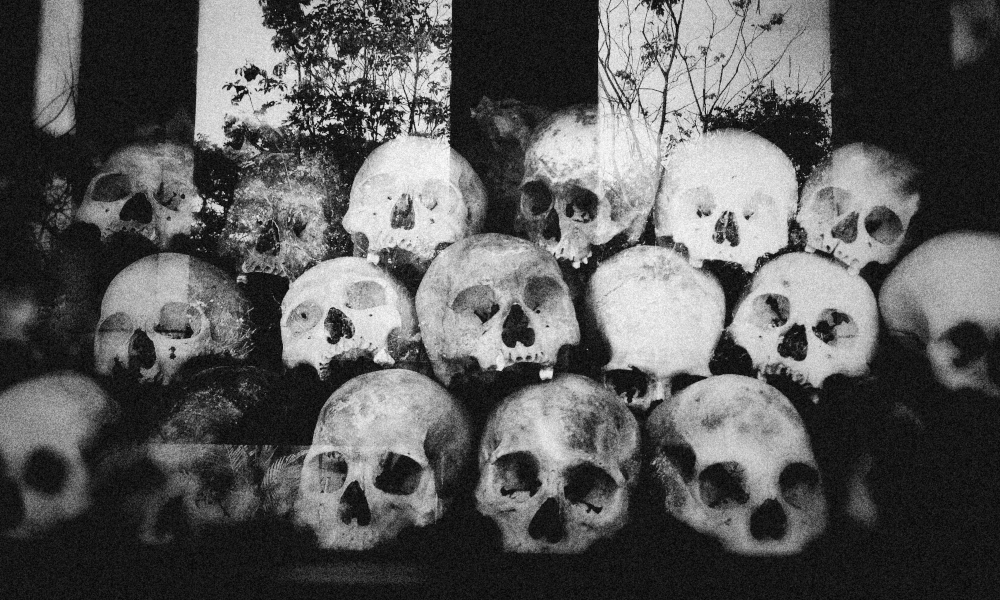Tuol Sleng Genocide Museum

The Tuol Sleng Genocide Museum, often referred to as Tuol Sleng serves as a poignant reminder of the Cambodian genocide. Situated in Phnom Penh, this museum was once a secondary school that the Khmer Rouge regime transformed into a Security Prison from 1975 until its collapse in 1979. During the years 1976 to 1979, around 20,000 individuals were held captive at Tuol Sleng, making it one of the numerous torture and execution sites operated by the Khmer Rouge and their secret police, the Santebal, with estimates ranging from 150 to 196 such centers. On July 26, 2010, the Extraordinary Chambers in the Courts of Cambodia found the prison’s leader, Kang Kek Iew, guilty of crimes against humanity and serious violations of the 1949 Geneva Conventions. He passed away on September 2, 2020, while serving a life sentence.
Table of Contents
ToggleExplore Siem Reap’s iconic temples on this immersive 2-day tour. With a local, English-speaking guide, discover the grandeur of Angkor Wat, the ancient ruins of...
Layout and Design
The structures at Tuol Sleng have been preserved, with many rooms still looking much like they did when the Khmer Rouge was ousted in 1979. The regime maintained detailed records, including thousands of photographs. Today, several areas of the museum are adorned from floor to ceiling with black and white images of some of the estimated 20,000 prisoners who were held there.
The site features four main buildings, labeled A, B, C, and D. Building A contains the large cells where the remains of the last victims were found. Building B showcases galleries filled with photographs. Building C consists of rooms divided into small cells for the prisoners. Building D displays various artifacts, including torture devices.
Some rooms are minimal, featuring only a rusted iron bedframe beneath a black and white photograph depicting the room as it was discovered by the Vietnamese. Each image shows a mutilated prisoner’s body chained to the bed, killed by fleeing captors just hours before the prison was liberated. Other rooms display leg irons and torture instruments, accompanied by paintings from former inmate Vann Nath that illustrate scenes of torture, added by the post-Khmer Rouge government established by the Vietnamese in 1979.
The museum welcomes visitors from 8:00 a.m. to 5:00 p.m. On weekdays, guests can attend a ‘survivor testimony’ session from 2:30 p.m. to 3:00 p.m. Together with the Choeung Ek Memorial (the Killing Fields), the Tuol Sleng Genocide Museum is a significant attraction for those exploring Cambodia.
History of Tuol Sleng Genocide Museum
A new detention center was established to house the victims of significant purges that caught the attention of the Khmer Rouge. This facility was located in what used to be Tuol Svay Prey High School, named after a royal ancestor of King Norodom Sihanouk. In March or April of 1976, the five buildings of the complex were transformed into a prison and interrogation center, following the use of other local buildings for similar purposes. The Khmer Rouge renamed the site and began renovations to secure it for inmates: the area was surrounded by electrified barbed wire, classrooms were turned into cramped prison and torture chambers, and all windows were barred and covered with barbed wire to prevent escapes and suicides.
Between 1976 and 1979, around 20,000 individuals were imprisoned at Tuol Sleng, with the number of prisoners at any given time ranging from 1,000 to 1,500. They faced relentless torture and were pressured to implicate family members and close friends, who were subsequently arrested, tortured, and killed.
In the initial months of S-21, most victims were associated with the former Lon Nol regime, including soldiers, government officials, academics, doctors, teachers, students, factory workers, monks, and engineers.
As paranoia grew among the party leadership, they began to target their own ranks, leading to purges across the nation that resulted in thousands of party activists and their families being taken to Tuol Sleng and executed. High-ranking politicians such as Khoy Thoun, Vorn Vet, and Hu Nim were among those arrested. Although they were officially charged with “espionage,” it is believed that Khmer Rouge leader Pol Pot viewed them as potential threats to his power. In some cases, the families of prisoners were also detained for interrogation and later executed at the Choeung Ek extermination center.
In 1979, the invading Vietnamese army discovered the prison. Sometime between 1979 and 1980, the People’s Republic of Kampuchea government reopened it as a historical museum to commemorate the events of the Khmer Rouge regime.
Should Visit or Not
Visiting the Killing Fields and S-21 prison in Phnom Penh is a deeply personal choice. It may not resonate with everyone. While some trips are filled with joy and laughter, this particular journey invites reflection and sorrow. It reveals the dark side of humanity, showcasing the horrors inflicted by ruthless leaders during a tragic period for the Cambodian people. Nonetheless, it’s crucial to experience these sites and understand the events that transpired to help prevent such atrocities from occurring again.
That said, this somber excursion isn’t mandatory. Only about a quarter of our ship’s passengers chose to participate, while the majority preferred to relax on board or explore Phnom Penh independently.
For those who do visit, there is significant value in witnessing the remnants of Cambodia’s troubled past, which have played a vital role in shaping the country today. Travelers who explore Tuol Sleng and the Killing Fields will gain insights into how corrupt politicians and dictators can seize power. This experience emphasizes the importance of educating future generations about these serious topics to ensure that history does not repeat itself.

